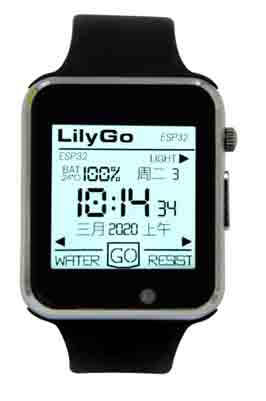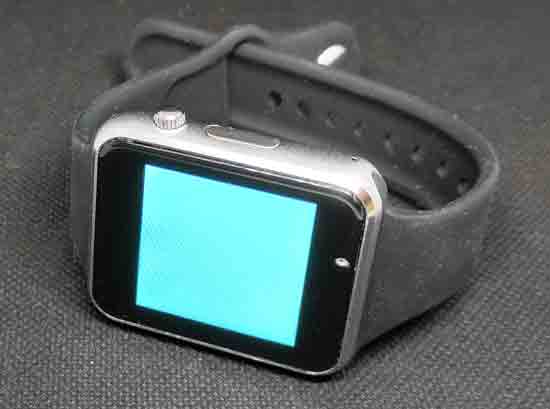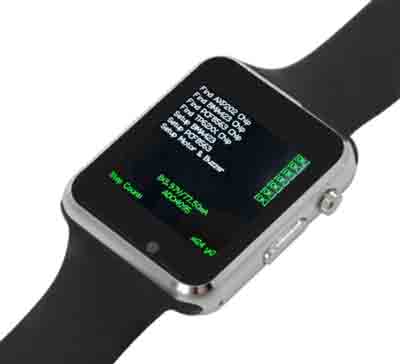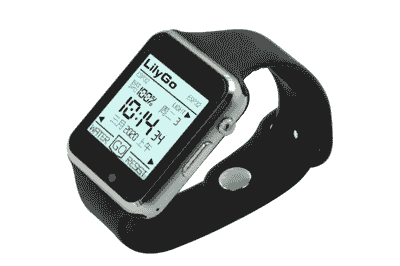Today we are going to review the LilyGo T-Watch 2020, a little toy that the Magi were kind enough to bring me this Christmas.
The T-Watch 2020 is a popular programmable watch from the manufacturer LilyGo. It is based on the ESP32, a well-known microcontroller on the blog, and the charm is that we have total freedom to program it with our own code.
The ESP32 gives the T-Watch 2000 the features we are already accustomed to. This Espressif MCU has a dual-core 80Mhz, with 520KB SRAM, to which 8MB PSRAM is added, and 16MB QSPI flash. Of course, the ESP32 provides Wi-Fi 802.11 b/g/n connectivity and Bluetooth v4.2BR/EDR/BLE
The chosen screen is a 1.54-inch color TFT, with a resolution of 320x240 pixels, which incorporates a capacitive touch panel. The visibility and colors of the screen and the sensitivity of the touch panel are correct.
The T-Watch 2020 case is one of the positive points of the set. The frame is metallic, with rounded edges and good finish. The overall appearance is robust and of good quality.
The dimensions of the watch (without strap) are 47mm x 40mm and a thickness of 13mm, with a weight of 58g. In use, it is a comfortable, light, and pleasant device to handle.

We can’t say the same about the strap, which is clearly one of the weakest points of this Weareable. Not only because it is not comfortable or especially aesthetic, but also because it closes really badly. On the other hand, the strap is integrated and fixed to the frame, so it is not possible to remove it.
In the frame, we find a round button that has both a push-button function and a two-way scroll wheel. Both functions work correctly, and the scroll wheel is surprisingly precise, without skipping steps.
Just below, we find the port to connect the watch via micro USB, covered by a small plastic cap. This is also a point to improve in the T-Watch 2020. On the one hand, a USB Type-C would be appreciated. In addition, the cap seems fragile and is annoying during programming.
Regarding the electronics, the T-Watch 2020 is full of devices and sensors. Thus, it incorporates a 3-axis BMA424 accelerometer, which includes step counting, activity recognition, and gesture recognition functions.

It also incorporates a microphone, speaker with MAX98357 amplifier connected via I2S, PCF8563 RTC clock, and a vibration motor.
The T-Watch 2020 incorporates a 3.7V lithium battery, and power management is controlled by an AXP202 PMU integrated circuit, whose data is accessible via I2C.
The battery life is reasonable. And I say “reasonable” because at the same time, one of the points that really prevent using the T-Watch as a daily watch. By optimizing the deep-sleep mode and restricting the use of Bluetooth and WiFi to the maximum, we can achieve up to 3 days.
Obviously, if we have the screen on, communications active, and put pressure on the processor, the battery will only last half an hour. But in a device of that size, and with that weight, we knew from the beginning that consumption would be a critical point.
As for the packaging, it is more than correct, as is usual in LilyGo products. The watch comes in a sturdy plastic box, which includes the watch, connection cable, and instructions.
Programming the T-Watch is no different from that of any ESP32. Therefore, it is possible to program it in C++, Micropython, Scratch. For the Arduino environment, a library is available at https://github.com/Xinyuan-LilyGO/TTGO_TWatch_Library

The documentation on the website, as is often the case with LilyGo products, is not one of the highlights. On the contrary, the library includes many examples, some of them very interesting. Among these, there is an implementation of a watch with WiFi, Bluetooth, GPS functions.
The price of the T-Watch is about 35€. This is a reasonable price considering the processor, memory, screen, battery, and sensors it incorporates, placing it in a range similar to or lower than other devices with similar characteristics.
In my opinion, it would have been a good decision to allow disassembling and removing the strap, to allow using the T-Watch 2020 as an independent processor in other types of projects. In this way, we would have something similar to an M5Stack, but with the possibility of wearing it on the wrist.
In conclusion, the T-Watch is a little toy and a little whim. Obviously, it does not really serve as an everyday watch, mainly because of its strap and battery. In this case, there are much better commercial options, such as a smart band like those from Xiaomi or Huawei.
However, it is most likely that you will not want the T-Watch as a watch but as a Weareable to load your projects and “play”. In this case, you will find the T-Watch a very interesting device.
